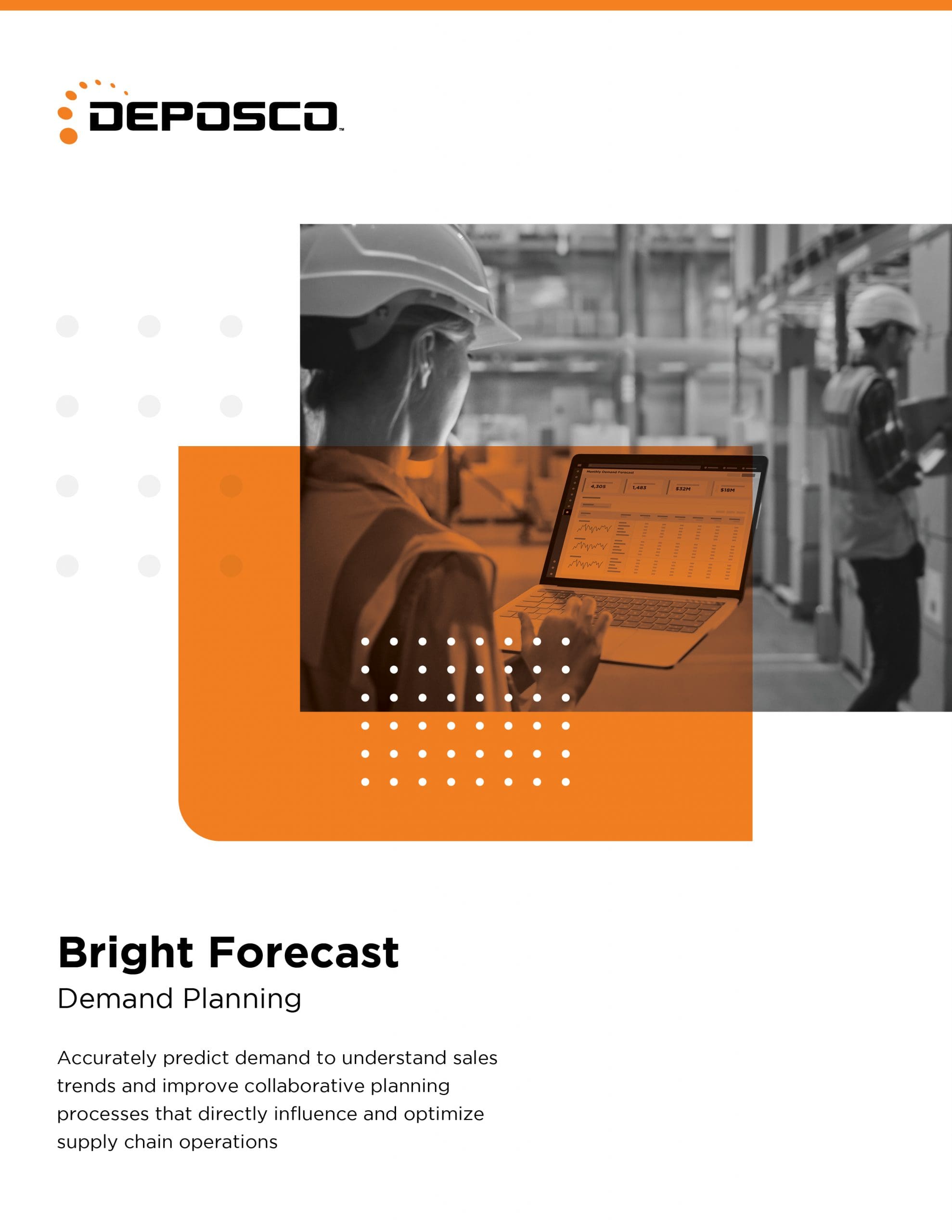Bright Forecast
Demand planning
Accurately predict demand to understand sales trends and improve collaborative demand planning processes that directly influence and optimize supply chain operations.
See it in ActionResults
30%
Reduction in out-of-stock rate
Our team doesn't have to worry about data integrity issues or communication problems with Deposco’s single-codebase platform. My team of planners now have more time to spend on more important things than fixing what should be automatic.”
Provide the products your customers want, when and where they want them

Ensure demand planning accuracy with advanced forecasting algorithms
Easily generate forecasts by selecting parameters to use different data sets and a mix of traditional and machine learning-based algorithms. Generate baseline demand planning forecasts by item, location, and channel. Handle outliers by applying different masking techniques.
- ARIMA
- SES
- Holt-Winter’s Exponential Smoothing
- Croston’s
- Facebook Prophet
- SVR
- Ensemble
- Best fit

Align forecasts through collaboration
Strategically developed on Deposco’s Bright Suite platform, Bright Forecast demand forecasting software allows demand planning professionals to efficiently generate, review, and share forecasts. Using a common platform that spans supply chain planning and execution, Bright Forecast facilitates collaboration including an approval system with notes and comments functionality. So users can set which forecasts have been reviewed and approved and which forecasts require more attention.
Unlock demand planning collaboration: Request a demo
Use comprehensive historical data for accurate forecast results
Leverage existing item historical data stored within Deposco’s Bright Suite applications to quickly generate forecasts. Alternatively, import custom datasets using the Forecast Dataset tool, which supports multiple data types, making it quick and easy to start forecasting.
Enhance forecasts with historical data: Request a demo
Avoid item stock-outs and excessive inventory
Using the events happening in the entire supply chain, demand forecasting software empowers planning teams to forecast accurately while gaining valuable and actionable insights into operational data and sales trends. This improves user productivity, inventory management, and understanding of demand drivers and item performance, increasing your revenue opportunities.
Still have questions? We're here to help! Speak with our team!
- Demand planning involves the process of determining the optimal inventory levels and supply chain strategies to meet customer demand. It focuses on operational aspects such as inventory management, production planning, and sourcing. Forecasting is the process of predicting future demand based on historical data and market trends. It provides input for demand planning but is not solely focused on operational decision-making.
- The 5 basic steps of demand forecasting are: 1. Data collection 2. Data analysis 3. Forecasting method selection 4. Forecast generation 5. Forecast evaluation. Explore inventory planning software.
- Forecasting and demand planning are crucial for businesses as they help predict customer demand, optimize inventory levels, improve production and sourcing processes, reduce costs, and maximize customer satisfaction.
- To start demand planning and forecasting, first gather historical sales data, customer insights, market trends, and other relevant information. Then, analyze the data using appropriate forecasting techniques and WMS tools to generate forecasts. Finally, evaluate and refine the forecasts based on feedback and market dynamics.
Success stories
Ecommerce
Retail
Our partnership with Deposco has grown so much over the years. Looking back, it’s nice to see where we were at the time and where we are today. It still feels like a great decision and a great partnership.
"Third-Party Logistics (3PL)






